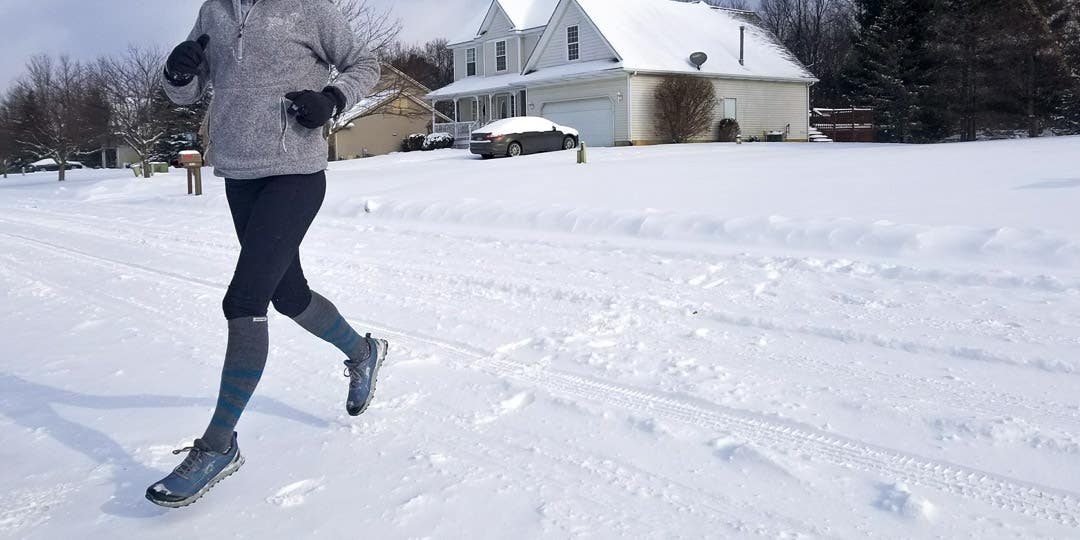Winter can mean different things based on where you live. And this winter especially, it means that no matter where you’re at, you could have some unpredictable weather! So how do you stay ready to run, no matter where you’re at? The key is to prepare with your gear so you don’t end up feeling frozen or getting sick. Here are a few tips on how to make that happen:
Explore the Layers of Running Clothing
We all have our favorite running gear, some for our summer and some for our winter runs. But have you ever really researched what kind of gear you should be wearing for each type of temperature and humidity? If you have, well done, even we’ve been winging it for a while now. If you’re looking for some guidelines, try this handy chart!
| Temperature | What You Should Wear |
| 60+ ℉ | Tank top and shorts |
| 50-59 ℉ | Short sleeve wicking shirt & shorts |
| 40-49 ℉ | Long sleeved wicking shirt, shorts or tights, gloves (optional), headband to cover ears (optional) |
| 30-39 ℉ | Long sleeved wicking shirt, shorts or tights, gloves, headband to cover ears |
| 20-29 ℉ | Two shirts (long sleeved wicking shirt under a short sleeved wicking shirt or long sleeved wicking shirt under jacket), tights, gloves, headband or hat to cover ears |
| 10-19℉ | Two shirts layered, tights, gloves or mittens, headband or hat, windbreaker jacket/pants |
| 0-9℉ | Two shirts layered, tights, mittens, headband or hat, windbreaker jacket/pants, ski mask to cover face |
One good thing to remember is that the weather where you are may not be the same as someplace you travel to. 60 degrees in Michigan feels different than 60 degrees in San Diego. Humidity (or the lack thereof) can have an effect on how hot (or cold) the air feels, how much it makes you sweat, and how your body reacts. Make sure to take all the factors into account, including how you personally react to temperature ranges, before you gear up for your run.
Don’t Forget Your Feet
No matter your running location, you should always remember to gear up starting from the ground! If you usually trot out the door in something lightweight and primarily made of mesh, you’ll want to up the ante a bit for colder (and slushier) temperatures. Look for shoes with less mesh and waterproof characteristics where you can. And for under those shoes? It’s time for a thicker sock with our favorite perks: moisture control and wicking action!
If you’re going the opposite direction and escaping the cold for a bit, try to remember what it’s like to run without all the layers. You’ll probably want to bring your lightweight shoes, some lighter socks, and the knowledge that you get to feel a bit of heat during your break from a frigid winter.
Hydrate, Hydrate, Hydrate
Just because you’re running in colder temperatures, don’t think that you’re not going to sweat and lose precious water content. Make sure you’re hydrating all day before your runs, and if you’re gone long enough, pack water to take with you. No one wants to deal with cramping muscles or getting sick or injured because of lack of preparation.









